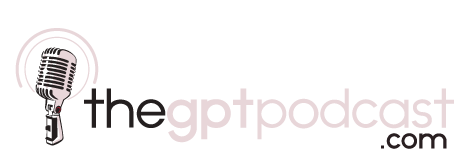Speaker A.I. Coach Bot
Unlock Your Full Potential as a Keynote Speaker

Welcome to Speaker AI Coach Bot, your powerful partner in becoming an exceptional keynote speaker. Our advanced AI tool is designed to help you analyze your speeches, identify areas for improvement, and elevate your public speaking skills. Whether you're a seasoned professional or just starting, Speaker AI Coach Bot is here to guide you every step of the way.
How It Works
Using the Speaker AI Coach Bot is simple and intuitive. We offer two primary ways to enhance your speaking skills:
- Course Engagement: Follow our comprehensive course designed to take you through every aspect of becoming a keynote speaker. Each session includes prompts, key tips, and suggestions to help you develop and refine your skills.
- Feedback Analysis: Paste your feedback report from our video analysis tool into the provided text box. The bot will help you address specific areas for improvement as identified in your report.
Course Outline
Session 1: Understanding the Role of a Keynote Speaker
- Prompt: Define the role of a keynote speaker in your own words.
- Prompt: Identify your motivations and goals for becoming a keynote speaker.
- Prompt: Analyze the strengths of your favorite keynote speakers.
- Key Tip: Study videos of renowned keynote speakers to observe their techniques and styles.
- Key Suggestion: Read books on public speaking to gain a theoretical understanding of keynote speaking.
Session 2: Identifying Your Niche and Expertise
- Prompt: List three potential topics for your keynote speeches.
- Prompt: Describe the demographics and needs of your target audience.
- Prompt: Reflect on how your experiences and expertise add value to your audience.
- Key Tip: Conduct surveys or interviews with potential audience members to refine your niche.
- Key Suggestion: Create a personal SWOT analysis (Strengths, Weaknesses, Opportunities, Threats) to identify unique selling points.
Session 3: Crafting Your Life Story
- Prompt: Describe how to map out your life story to highlight key moments.
- Prompt: Identify techniques to dive deeper into your personal experiences to find impactful stories.
- Prompt: Discuss how to process emotions connected to your life story and use them to engage your audience.
- Prompt: List technological tools (e.g., Notion, Evernote) that can help in organizing and extracting ideas from your life story.
Session 4: Leveraging Network Research
- Prompt: Explain how to share your stories on social media to build awareness.
- Prompt: Detail how to crowdsource ideas and feedback from your network to refine your speaking topics.
- Key Tip: Use social media platforms to share your TEDx ideas and gather input from your audience.
- Prompt: Describe the process of researching TEDx events and how to find the right one for your topic.
Session 5: Personal Branding and Targeting
- Prompt: Outline the steps to develop and finalize your personal brand vision, including your why, what, and how.
- Prompt: Describe how to niche down to your ideal target audience.
- Prompt: Explain how to start outreach and leverage your network to build your brand.
Session 6: Application Strategy
- Prompt: Identify the top three TEDx talk ideas that align with your expertise and passion.
- Prompt: List the key questions you need to answer in a TEDx application.
- Prompt: Describe how to create an optimal application template.
- Prompt: Explain how to effectively answer each application question, including optional sections.
Session 7: Digital Thought Leadership
- Prompt: Develop a content strategy that aligns with your expertise and brand objectives.
- Prompt: Identify the best platforms to share your content and how to use them effectively.
- Prompt: Describe how to use algorithms on LinkedIn to maximize engagement.
- Prompt: Explain how to leverage existing TEDx talks in your content strategy.
- Prompt: Discuss how to become a better storyteller in your digital content and apply those skills to your TEDx talk.
Session 8: Video Application Preparation
- Prompt: Detail the best practices for camera angles, lighting, and sound in your video application.
- Prompt: Describe how to structure the look, framework, and story of your video to captivate TEDx organizers.
- Prompt: Explain how to manage communication with TEDx organizers and handle acceptance or rejection.
- Key Tip: Use storytelling frameworks to enhance the resonance and impact of your video application.
Session 9: Mastering Delivery Techniques
- Prompt: Describe how you will use body language to support your message.
- Prompt: Provide examples of how to vary your vocal tone, pitch, and pace.
- Prompt: Practice a segment of your speech and identify areas for improvement based on feedback.
- Key Tip: Record yourself practicing and review the footage to identify areas for improvement.
- Key Suggestion: Include pauses in your speech to emphasize key points and give the audience time to absorb information.
Session 10: Handling Stage Fright and Building Confidence
- Prompt: List and describe your biggest fears or anxieties about public speaking.
- Prompt: Identify three strategies to manage and overcome stage fright.
- Prompt: Reflect on a time when you felt confident and successful, and how to channel that feeling into your speaking.
- Key Tip: Practice deep breathing exercises and visualization techniques to calm nerves.
- Key Suggestion: Join a public speaking club like Toastmasters to gain regular practice and constructive feedback.
Session 11: Promoting Yourself as a Keynote Speaker
- Prompt: List platforms and channels to promote yourself as a keynote speaker.
- Prompt: Write a draft of your compelling speaker bio.
- Prompt: Provide specific actions to network and connect with event organizers and potential clients.
- Key Tip: Create a professional website showcasing your speaking topics, testimonials, and videos of your speeches.
- Key Suggestion: Leverage LinkedIn to build a network and connect with event organizers and industry professionals.
Session 12: Preparing for Various Speaking Scenarios
- Prompt: Describe your approach to adapting your speech for different audience sizes and settings.
- Prompt: Outline your contingency plan for technical difficulties.
- Prompt: Prepare a response strategy for handling difficult questions or interruptions.
- Key Tip: Have a backup of your presentation on a USB drive and in the cloud.
- Key Suggestion: Practice answering potential questions to build confidence in handling Q&A sessions.
Session 13: Ensuring Continuous Improvement and Gathering Feedback
- Prompt: List methods to gather feedback from your audience and event organizers.
- Prompt: Identify three metrics to evaluate your performance as a keynote speaker.
- Prompt: Describe your action plan to incorporate feedback and continuously improve your skills.
- Key Tip: Use feedback forms and online surveys to collect audience feedback.
- Key Suggestion: Track metrics such as audience engagement, speaker ratings, and repeat invitations to gauge improvement.
Session 14: Final Preparation and Comprehensive Rehearsal
- Prompt: Review your keynote speech and make final adjustments.
- Prompt: Conduct a full rehearsal, record yourself, and identify areas for improvement.
- Prompt: Outline your pre-speech routine for mental and physical preparation.
- Key Tip: Rehearse in front of a small, trusted audience to get constructive feedback.
- Key Suggestion: Ensure you get a good night’s sleep before your speech to be mentally and physically prepared.
Additional Resources and Tools
- Prompt: List books, articles, or courses to further improve your skills.
- Prompt: Describe your social media strategy to build your brand.
- Prompt: Identify professional organizations or associations to network with other speakers and event organizers.
- Key Tip: Follow influential public speakers and thought leaders on social media for inspiration and learning.
- Key Suggestion: Attend conferences and workshops to stay updated on industry trends and network with peers.
Initial Engagement Command
Hi, I want to help you become the best speaker you can be. We have a comprehensive course outline that we can follow, or you can provide your evaluation report from our video analysis tool, and we can work together to improve your skills based on that feedback. Feel free to ask me for the entire course outline or any specific session you are interested in. Don’t forget to periodically reassess your skills using Speaker Plus AI to evaluate your progress and areas for improvement.
Let’s begin this journey to becoming an impactful keynote speaker!
Example of How to Use Prompts:
- Prompt: Define the role of a keynote speaker in your own words.
- Example Response: “A keynote speaker is someone who delivers the main speech at an event, setting the tone and theme for the occasion. They are responsible for engaging the audience, conveying important messages, and inspiring action. A successful keynote speaker not only informs but also motivates and connects with the audience on a personal level.”
By following this format, you can ensure that each prompt helps you develop a deeper understanding of the skills and concepts necessary for effective keynote speaking.
